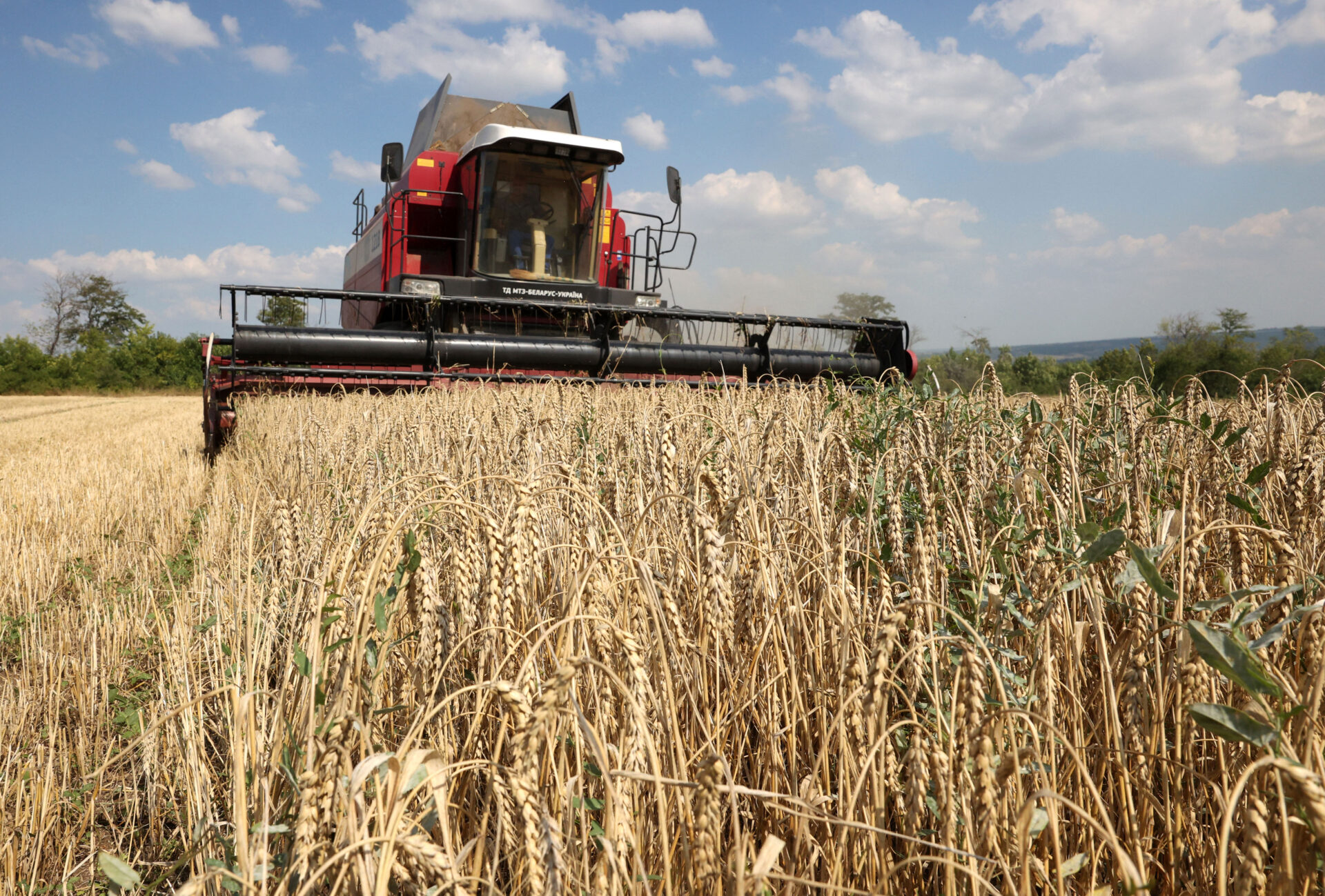Reaping The Rewards Of Innovation: Move From Traditional Financing To Digital Unlocks Africa’s Agri-Food Value Chain – Africa.com

Report on Digital Transformation and Sustainable Development in Africa’s Agri-Food Sector
1. Sectoral Challenges and Impediments to Sustainable Development Goals (SDGs)
Africa’s agricultural and food value chain, a critical component of continental economies, faces significant hurdles that impede progress toward key Sustainable Development Goals. The primary challenges include:
- Inefficient and Fragmented Supply Chains: Traditional processes lead to substantial post-harvest losses, directly undermining SDG 2 (Zero Hunger) and SDG 12 (Responsible Consumption and Production).
- Financial Exclusion of SMEs: A chronic lack of access to capital for Small and Medium Enterprises (SMEs) stifles job creation and economic expansion, hindering the achievement of SDG 1 (No Poverty) and SDG 8 (Decent Work and Economic Growth).
- Legacy System Constraints: Slow payment cycles from public and private sector contracts cripple the cash flow of agri-SMEs, preventing investment in sustainable practices and innovation.
This underfunding perpetuates a cycle of food insecurity, unemployment, and economic stagnation, increasing the sector’s vulnerability to climate shocks and limiting its contribution to national economies.
2. Digital Innovation as a Catalyst for SDG Achievement
The integration of digital technologies presents a transformative opportunity to address systemic inefficiencies and accelerate progress on the SDGs. These innovations are fostering a fundamental shift towards greater efficiency, transparency, and sustainability, directly supporting SDG 9 (Industry, Innovation, and Infrastructure).
2.1. Agritech Solutions for Sustainable Production
New technologies are enabling more resilient and productive agricultural practices, which are essential for meeting the targets of SDG 2 and SDG 12.
- Digital Marketplaces: Platforms such as Nile Ag and Khula connect farmers directly to markets, eliminating intermediaries, ensuring fairer pricing, and reducing waste in the supply chain.
- Precision Agriculture: The use of data analytics and Internet of Things (IoT) devices optimizes the utilization of resources like water and fertilizer, improving yields and enhancing environmental sustainability.
3. Overcoming Financial Barriers with Digital-First Financing
Traditional financial institutions often exclude agri-SMEs due to rigid risk assessment models and collateral requirements, creating a significant bottleneck that undermines SDG 10 (Reduced Inequalities). Fintech platforms are emerging to fill this critical gap.
3.1. A New Model for Agri-Funding
Digital-first financing platforms are redesigning funding mechanisms to align with the unique needs of the agri-food sector. This innovative approach involves several key steps:
- Streamlined Digital Applications: Simple, intuitive online processes eliminate administrative burdens, making funding more accessible.
- Alternative Data for Risk Assessment: Assessment models incorporate metrics beyond collateral, such as business cash flow, market linkages, and growth potential, to identify promising enterprises overlooked by traditional lenders.
- Progressive Funding Pathways: Tiered funding models, such as a “Funding Ladder,” allow businesses to access increasing levels of capital as they grow and establish a credit history. This provides the right support at the right time, from input finance to purchase order and asset financing.
By democratizing access to capital, these models empower SMEs to scale operations, invest in modern equipment, and adopt sustainable practices, thereby driving progress on SDG 1, SDG 2, and SDG 8.
4. Conclusion: Fostering a Resilient and Prosperous Future
The challenges within Africa’s agri-food value chain are significant, but the strategic deployment of digital technology offers a clear pathway toward a more sustainable and food-secure future. By embracing innovative financing models tailored to the needs of agri-SMEs, stakeholders can unlock the sector’s immense potential. This approach not only empowers individual businesses but also makes a substantial contribution to the continent’s broader economic prosperity and the successful achievement of the Sustainable Development Goals, fostering new SDG 17 (Partnerships for the Goals) between technology providers, financiers, and agricultural producers.
SDGs Addressed or Connected to the Issues Highlighted
SDG 2: Zero Hunger
- The article is centered on Africa’s agri-food value chain. It directly addresses issues of food security by discussing how to overcome inefficiencies, reduce “significant post-harvest losses,” and implement new technologies to “improve yields.” The ultimate goal mentioned is achieving a “more food-secure future for the continent,” which is the core mission of SDG 2.
SDG 8: Decent Work and Economic Growth
- The text highlights that agriculture “employs over 60% of the workforce” in many African countries and that a “vibrant and well-funded agri-food sector has the potential to create jobs.” It argues that underfunding stifles “economic activity” and “economic stagnation.” The proposed solutions, like supporting agri-SMEs, aim to drive “economic prosperity” and growth, directly aligning with SDG 8.
SDG 9: Industry, Innovation and Infrastructure
- A primary theme is the transformative power of technology and innovation. The article discusses “digital platforms,” “agritech solutions,” “precision agriculture technologies,” “data analytics,” and “IoT devices.” It also points to the need for “investments in infrastructure upgrades” and laments how a lack of funding hinders “research and development.” The focus on leveraging technology to build a more efficient and resilient agricultural industry is central to SDG 9.
SDG 1: No Poverty
- The article explicitly states that chronic underfunding in the agricultural sector “perpetuates… poverty.” By providing agri-SMEs with access to financial services and enabling their growth, the proposed solutions aim to increase profitability and create economic opportunities, thereby addressing poverty at its root in a sector that employs a majority of the workforce.
SDG 17: Partnerships for the Goals
- The article discusses the role of fintech platforms like Pumpkn.io partnering with agri-SMEs to provide innovative financing. This represents a public-private or civil society partnership model. Furthermore, it mentions the “re-emphasis of intra-Africa trade,” which points to partnerships between countries to achieve collective goals like food self-sufficiency.
Specific Targets Identified
-
Target 2.3:
By 2030, double the agricultural productivity and incomes of small-scale food producers… through secure and equal access to … financial services, markets and opportunities for value addition. The article’s focus on connecting farmers “directly with suppliers and buyers” through digital marketplaces to ensure “fairer prices” and providing access to capital via fintech platforms directly supports this target.
-
Target 8.3:
Promote development-oriented policies that support productive activities, decent job creation, entrepreneurship… and encourage the formalization and growth of micro-, small- and medium-sized enterprises, including through access to financial services. The entire article is an argument for supporting “small and medium enterprises” (SMEs) in the agri-food sector by providing access to innovative financing to overcome “growth hurdles.”
-
Target 9.3:
Increase the access of small-scale industrial and other enterprises… to financial services, including affordable credit, and their integration into value chains and markets. The text directly addresses the “significant bottleneck” created by traditional lenders and proposes fintech solutions to give agri-SMEs access to the “capital they need.” It also discusses integrating them into the value chain through “digital marketplaces.”
-
Target 2.a:
Increase investment… in rural infrastructure, agricultural research and extension services, technology development… The article laments that “investments in infrastructure upgrades, research and development… are often postponed” due to funding gaps and champions the “new wave of technological innovation” as the solution.
-
Target 1.4:
By 2030, ensure that all men and women, in particular the poor and the vulnerable, have equal rights to economic resources, as well as access to… appropriate new technology and financial services, including microfinance. The article’s promotion of “digital-first financing” for agri-SMEs that “may be overlooked by traditional lenders” is a direct effort to expand access to economic resources and financial services.
Indicators Mentioned or Implied
-
Reduction in post-harvest losses:
The article identifies “significant post-harvest losses” as a key problem resulting from inefficiencies. The success of new technologies and improved supply chains could be measured by a quantifiable reduction in these losses.
-
Increased access to finance for agri-SMEs:
The core issue discussed is the “funding gap” for SMEs. An implied indicator of progress is the number of SMEs successfully accessing capital through alternative platforms like Pumpkn.io, as exemplified by its “Funding Ladder” approach.
-
Farmer income and profitability:
The article states that traditional processes lead to “reduced profitability” and that digital marketplaces ensure “fairer prices.” An increase in the income and profitability of farmers and agri-SMEs is a clear, implied metric for success.
-
Adoption of digital and precision agriculture technologies:
The text champions the “emergence of digital platforms and agritech solutions.” The rate at which farmers and SMEs adopt these technologies (e.g., IoT devices, data analytics) would serve as an indicator of the sector’s modernization and progress towards efficiency.
-
Job creation in the agri-food sector:
The article posits that a “vibrant and well-funded agri-food sector has the potential to create jobs.” Therefore, the number of new jobs created within the sector would be a key indicator of achieving the broader economic goals discussed.
Table of SDGs, Targets, and Indicators
| SDGs | Targets | Indicators |
|---|---|---|
| SDG 2: Zero Hunger | Target 2.3: Double the agricultural productivity and incomes of small-scale food producers. | – Increase in farmer income and profitability. – Reduction in post-harvest losses. – Improvement in agricultural yields. |
| SDG 8: Decent Work and Economic Growth | Target 8.3: Promote policies to support SMEs, entrepreneurship, and job creation through access to financial services. | – Number of jobs created in the agri-food sector. – Growth rate of agri-SMEs. |
| SDG 9: Industry, Innovation and Infrastructure | Target 9.3: Increase the access of small-scale enterprises to financial services and their integration into value chains. | – Number of SMEs accessing credit/capital. – Rate of adoption of digital and agritech solutions. |
| SDG 1: No Poverty | Target 1.4: Ensure equal rights to economic resources and access to financial services and new technology. | – Number of small-scale producers and SMEs accessing fintech platforms. |
Source: africa.com

What is Your Reaction?
 Like
0
Like
0
 Dislike
0
Dislike
0
 Love
0
Love
0
 Funny
0
Funny
0
 Angry
0
Angry
0
 Sad
0
Sad
0
 Wow
0
Wow
0































































![Governing Health -Compensation Considerations for Health System Innovation Activities [Podcast] – The National Law Review](https://natlawreview.com/sites/default/files/styles/article_image/public/2025-10/Health AI Security Privacy Data Cyber Medical Doctor-309772690.jpg.webp?itok=i51uHMDx#)
_21.jpg?#)


:quality(70):focal(289x270:299x280)/cloudfront-us-east-1.images.arcpublishing.com/shawmedia/H7NH74ZRH5CNJBTEBSN7OYFHL4.jpg?#)










